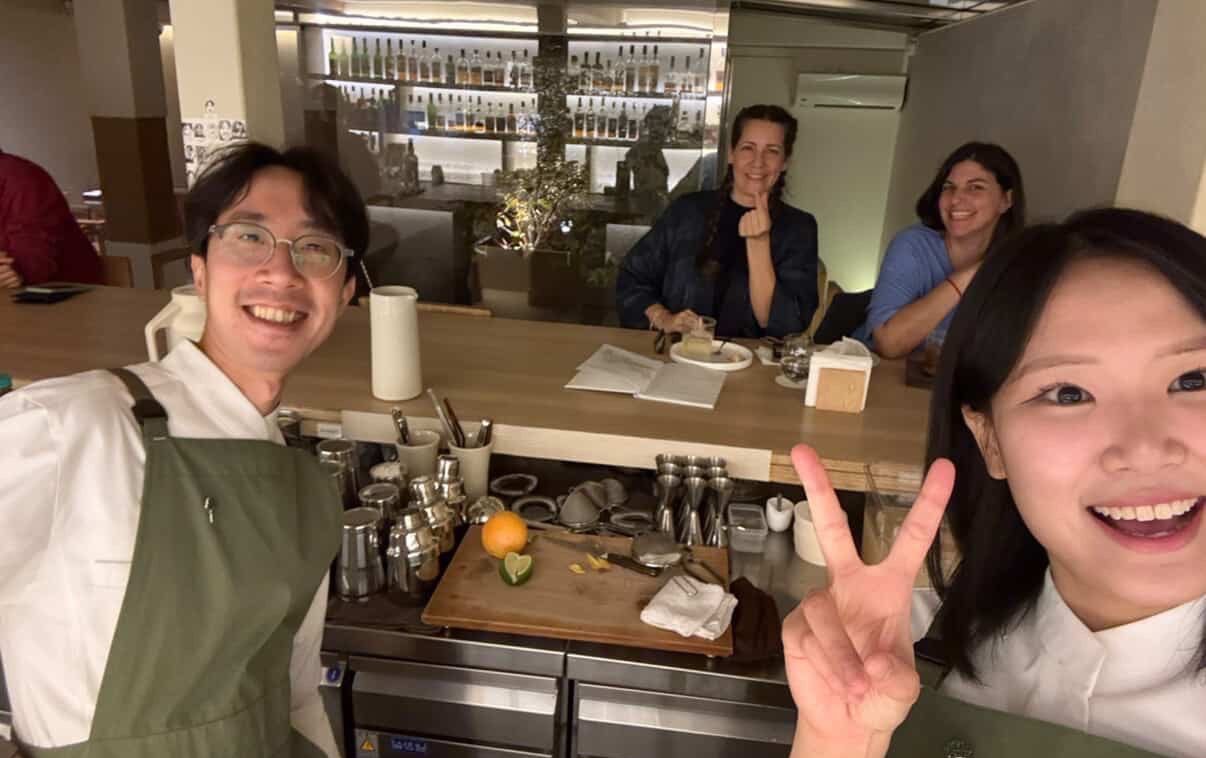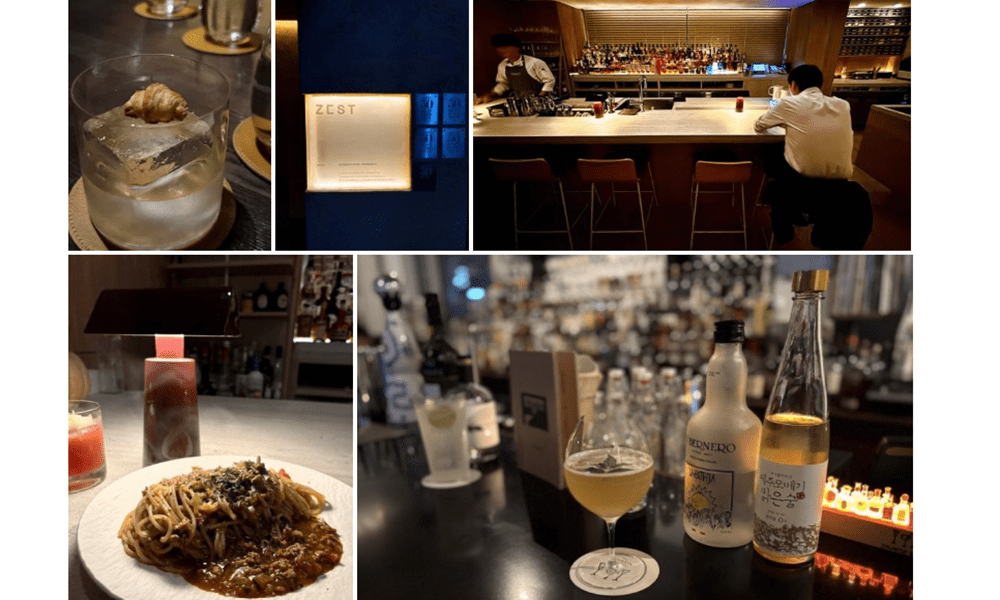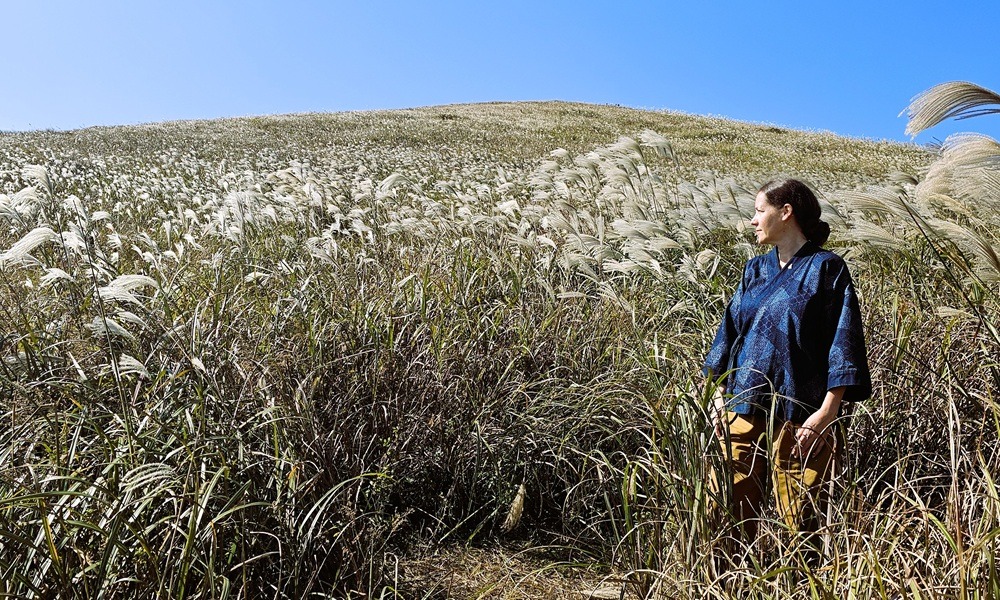K-Pour Chronicles — Barstalker’s Notes from South Korea

It’s my second time in South Korea, and I still can’t quite believe I’m back within just a year. My first trip, back in February, left me stirred in more ways than one. Seoul can feel like a city wrapped in social media gloss, polished appearances, and an ever-present couple culture. As a solo traveler, it’s easy to feel like you’re always missing your other half. But then… there were the bars.
Tucked behind unmarked doors, hidden down narrow alleys or spiraling staircases, I found something deeper. Spaces where masks slipped. Where the music was low, the lights softer, and stories were poured one glass at a time. That part of Korea left me shaken—and thirsty for more. So here I am again. But this time, not alone. Joining me in spirit—and in spirits—is my booze buddy and sister in mind, Stéphanie, aka @attadrink. Together, we’re tracing not just the streets of Seoul, but the spirit of South Korea itself. One cocktail, one conversation, one quiet moment at a time. This is a love story on second sight. Let the K-Pour Chronicles begin.
A Quick Pour: An Introduction to Korea’s Cocktail Scene
South Korea’s cocktail scene has transformed—quietly, intentionally—over the past decade. What once revolved around hotel lounges and simple highballs has bloomed into one of Asia’s most creative and grounded bar cultures. Seoul is at its center, but its energy spreads outward—measured, confident, and deeply connected to place. This isn’t a loud or boastful scene. It draws on Japanese-influenced technique and overlays it with a uniquely Korean sense of seasonality, restraint, and hospitality. Cocktails here aren’t just drinks. They’re distilled expressions of landscape, craft, and care.
What’s Stirring the Scene
One of the most exciting shifts in Korea’s cocktail culture is the embrace of local ingredients. Bartenders are no longer leaning solely on Western spirits. Instead, they’re building drinks with soju—especially premium styles like Hwayo or traditional Andong soju—as well as with makgeolli, cheongju (refined rice wine), and fruit ferments like maesil (green plum) or omija (schisandra). Flavours like yuja, jujube, ssuk (mugwort), kkaennip (perilla), pine, ginseng, and local honeys bring complexity and identity to the glass. These aren’t exotic flourishes—they’re foundational.
Beyond the bar counter, fermentation is a pillar of Korean culinary heritage, and it shows up boldly in cocktails. Techniques using nuruk, koji, lacto-ferments, and house-brewed kombucha add texture and depth. Korean teas—green, black, fermented, or herbal—are often used as infusions, spritzers, or even carbonation bases, offering subtle layers without overpowering the drink.
There’s also a quiet revolution happening in sustainability. Low-waste here isn’t just buzz—it’s embedded in the process. Citrus peels become cordials. Fermentation lees are repurposed into syrups. Many bars run on lean prep lists and reimagined ingredients, paired with crystal-clear ice and beautifully minimal glassware. It’s meticulous, but not performative.
Menus, too, are evolving. While some bars stick with à la carte classics, others are adopting a tasting-menu or omakase-style format, where cocktails are paired with anju—Korean drinking snacks. These courses follow the rhythm of the seasons: yuja in winter, maesil in spring, toasted barley in late summer. It’s bartending with a chef’s sensitivity.
Perhaps most defining is the hospitality style. Step into a serious cocktail bar in Seoul and you’ll likely find counter seating, a soft atmosphere, and a sense of ritual: drinks poured with two hands, elders served first, bartenders who move quietly but intentionally. Many of the best spots require reservations—but behind the formality is warmth, humility, and welcome.
Names to Know
South Korea’s top bars now regularly appear on Asia’s 50 Best Bars and World’s 50 Best Bars lists—not as novelties, but as leaders. You’ll find Charles H., a speakeasy-style icon in the Four Seasons Seoul, known for its elegance and consistency. Le Chamber, hidden behind a bookshelf, offers theatricality with flawless execution. Alice Cheongdam brings whimsy and narrative to each drink, while Zest redefines sustainability with low-ABV innovation and house-fermented ingredients. Then there’s Bar Cham—deeply Korean, quietly excellent—where tradition and modernity meet with grace.
Why It Matters
This isn’t just a great place to drink. It’s a country reimagining its drinking culture. Traditional customs—rituals of pouring, of shared glasses, of showing respect—are still deeply rooted here. But now, they’re being reinterpreted through a modern, thoughtful lens. Korea brings playfulness where others bring formality, warmth where others bring technique. The result is a cocktail culture that feels alive, yet grounded. If Japan gave us ceremony, Korea gives us character.
I came back to South Korea for many reasons. But mostly, I came back to chase the quiet moments behind the bar—the clink of glass on wood, the scent of toasted rice or pine, the way a bartender leans in and says, “Try this.” Let’s see what the city’s pouring.
My first journey through South Korea’s bars left a mark. Those moments live on here. The full stories will follow — as time allows, as memory allows, as each sip decides to speak. Stay tuned!
✦ Episode 1: The First Sips

✦ Episode 2: Three Ways a City Reveals Itself

✦ Episode 3: Jeju Moments

The story began in Seoul — but the glass kept moving. Since that first night, the journey has unfolded across islands and small cities. Some episodes are already written. Others are still waiting — held in memory, or halfway scribbled in a notebook between pours. Here’s what’s coming next:
✦ Episode 4: Small Cities, Deep Spirits
Gyeongju & Daegu – A return to Gyeongju’s gentle charm, then a new bar discovery in Daegu. Unexpected warmth, thoughtful drinks, and slower nights with deep flavours.
✦ Episode 5: Back to the Start
Seoul (again) – One more round before goodbye. Revisiting favourites and uncovering a few new names — Seoul always has one last sip to share.




